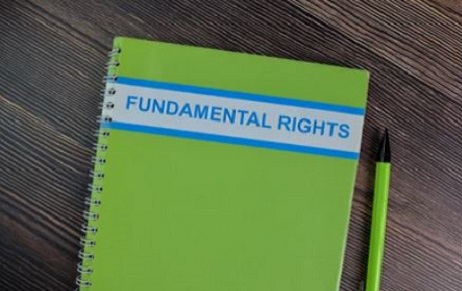Franklin D. Roosevelt (FRD) on different platforms, supported the Indian Freedom Struggle making the abovementioned…
Understanding Deceptive similarity in “Pharma Industry”
INTRODUCTION
Section 2(1)(h) of the Trade Marks Act defines the word “deceptively similar” as “A mark shall be deemed to be deceptively similar to another mark if it so nearly resembles that other mark as to be likely to deceive or cause confusion”[1]. There are numerous ways from which a trademark can be infringed the most common way being used of deceptively similar marks, with the intention to confuse the general public. The general public are not aware of the original trademark, being a developing country only 75% people of India is literate and rest of the people can’t even read. In these situations, the companies use the deceptive similar trademark of the original product to increase their sales by using the name and goodwill of the original company and create confusion among the general public. There is no provision in the trademark act,1999 which pertains to drug and medicines, deceptively similar mark in the pharmaceutical industry is strictly forbidden.
BLOG
Trademark is an indication of the origin of goods and service and it distinguishes between the goods and services of one from another. We come across various products where a company copies the substantial part of already existing trademark of company which have a goodwill the existing market. Sometimes even the person is not able to distinguish between the two products. These infringements are against the section 2(1)(h) of the Trademark Act. The criteria for detecting deceptive similarity were established long ago by Hon’ble Supreme court in the case of Cadila HealthcareLtd v. Cadila Pharmaceutical Ltd[2]. In 2001. The court established specific guidelines for detecting the deceptive similar trademark. It stated that following factors should be taken into account in determining whether a trademark is deceptive or not.
- The nature of the product or service the mark relates to.
- The degree of resemblance between the two marks.
- The type of mark- weather it be a word, symbol, or phrase, and target audience that the company offers are also significant factors.
Recently Delhi High court in the case of mankind pharma directed the removal of the ‘NIKIND’ word from Trademark register and stated that “Although, the word “KIND” is not related to the products being sold by the petitioner, but due to its long and extensive usage it has come to be exclusively associated with the petitioner and this would entitle the petitioner to a higher protection for the “KIND” family of marks. Merely changing the first part of the mark by use of the distinguishing family „name‟ (i.e., “KIND” in the present case) or characteristic is likely to cause confusion both in trade and in the mind of public”[3]. From the above order it can be stated that the both the words will most likely create a confusion among the people and would eventually hamper the sales of the Mankind pharma and also create a confusion among the consumers. Thus, the visual representation of the respective packs appears to be important criteria while determining the deceptive similarity between two trademarks. There are mainly three types of the similarity in the trademark like Visual Similarity, Aural Similarity and conceptual similarity. Visual similarity includes all the visual aspects of the mark like designs, Aural similarity means where the pronunciation of the mark is identical and in the conceptual similarity both the Visual as well as aural are similar like Gluvita and Glucovita.
Dilution of Trademark
In the case of the Caterpillar Inc. v. Mehtab Ahmed[4] the court found that with respect to similar marks, there was dilution of the mark, dilution occurs when a third party uses a trademark that is similar to a famous mark to confuse the public perception of the famous mark. The Doctrine of dilution is concept that gives power to the owner of the famous trademark to prohibit other from using the mark in a way that would hamper its uniqueness. In 1927, a lawyer named Frank I. Schechter pushed for broader trademark protection beyond just preventing consumer confusion. In his article “The Rational Basis of Trademark Protection,” he argued that trademarks deserve defense against actions that weaken their “originality and uniqueness.” This concept, later known as trademark dilution, established Schechter as the “father of dilution” for laying the groundwork for this legal doctrine.
Delhi High Court recently held that In Sun Pharma Laboratories Limited v Bdr Pharmaceuticals International Pvt Ltd & Anr[5] That the following key points that should be considered when deciding case of deceptive similarity involving pharmaceutical trademarks,
- The marks have to be compared as a whole and they have to be judged by their look and sound;
- The consumer base has also to be considered;
- Where medicinal products are involved, the test to check the likelihood of confusion should be strictly applied. In the cases of Non-Pharmaceutical products, confusion only creates economic loss to the company but in the case of pharmaceutical products it may have impact on the health and life of the individual.
- Though one drug may be sold in form such as tablets and injectables, and the other may be sold in form as a lotion and a cream, both drugs may be sold through common channels. Further, the similarity of the trademarks may give rise to possible deception or confusion.

CONCLUSION
A Trademark act as unique identification for the company and it also help to gain brand reputation. Protection from an unauthorized use by people who use that trademark confusingly is vital. Such use misleads customers, and makes it more difficult for them to distinguish the source of quality of products. To safeguard the right of legitimate trademark owners and consumers interests, courts take a strict action against deceptive similarities. The legal principal, known as the doctrine of deceptive similarity. It acts as a defence against trademark infringement and passing off. The judiciary demonstrates a strong dedication and resolve in ensuring fair resolution of trademark infringement cases which involves deceptive similarity.
Author: Abhiket Anand, A Student at Lloyd Law College, Greater Noida, in case of any queries please contact/write back to us via email to chhavi@khuranaandkhurana.com or at IIPRD.
REFERENCES
Universal Bare Act, Trademark Act, 1999
[1] Trade Marks Act, 1999
[2] Cadila Healthcare Limited vs Cadila Pharmaceuticals AIR 2001 SUPREME COURT 1952, 2001
[3] Mankind Pharma Limited v. Arvind Kumar Trading and Anr. C.O(COMM.IPD-TM) 146/2022
[4] Caterpillar Inc. vs Mehtab Ahmed And Ors. on 9 August, 2002
[5] Sun Pharma Laboratories Limited v Bdr Pharmaceuticals International Pvt Ltd & Anr



